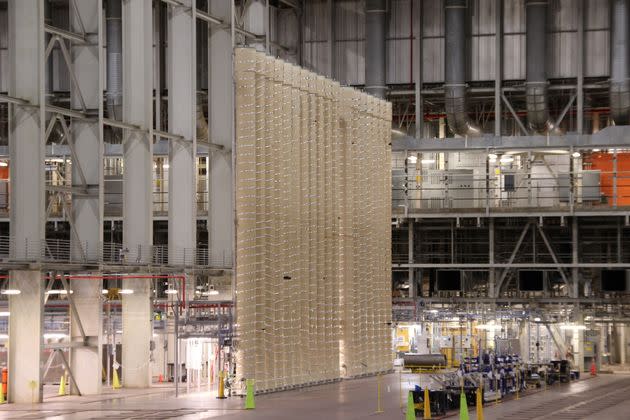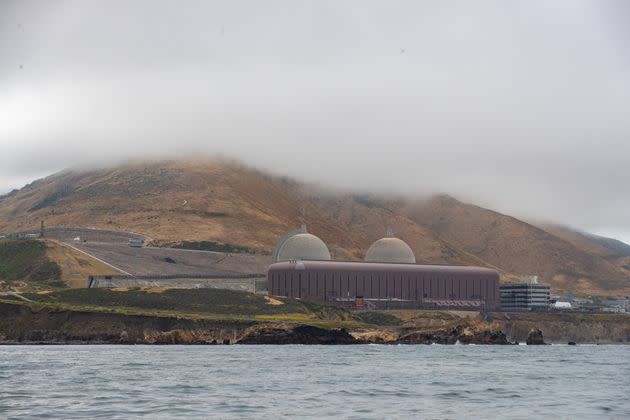The U.S. Inches Closer To Breaking Russia’s Monopoly On This Rare And Necessary Fuel
At the dawn of the atomic age, the United States mined, enriched and split its own uranium in what ultimately became the world’s largest and most self-reliant fleet of nuclear reactors. As fission fell out of favor in the 1980s, the country began importing more fuel for its reactors. When Washington made a deal with Russia in the 1990s to buy uranium harvested from disassembling the Soviet bombs once aimed at Americans, the domestic industry couldn’t compete, and collapsed.
Three decades later, the U.S. and its allies are scrambling to revive their declining nuclear sectors in a bid to replace planet-heating fossil fuels and, in the wake of the invasion of Ukraine, cut back on imports of Russian natural gas and oil. A new generation of atomic startups are seeking to commercialize types of reactors never before brought to market, and lawmakers from both parties in Congress say they’re ready to help speed up the effort.
If reversing nuclear decline and wooing skeptics in the public who still fear improbable accidents like Fukushima more than the certain but slow-rolling catastrophe of climate change isn’t hard enough, those companies are running into a major problem. There’s only one vendor in the whole world that sells the concentrated form of uranium fuel many of these so-called “advanced” reactors need.
And it’s an arm of the Russian government.
But the U.S. is inching closer to breaking the Kremlin’s monopoly.
On Monday, the Ohio-based Centrus Energy announced a deal to supply the California-based reactor startup Oklo Inc. with a fuel known as high-assay low-enriched uranium, or HALEU.
Pronounced HAY-loo, the fuel compares to traditional reactor fuel the way a heady Belgian ale might stack up to a Miller Lite. The old-school, large-scale reactors that comprise the entire U.S. fleet can’t stomach HALEU, which is enriched to the point where as much as 20% of the uranium atoms can be split, as opposed to the typical stuff that maxes out at 5%. But the sleek new reactor technologies companies like Oklo, Bill Gates-backed TerraPower and the Maryland-based X-energy hope to bring to market in the coming years run on that stronger stuff.

An array of centrifuges, known as a "cascade," is shown at Centrus Energy's Ohio facility.
As it is, the U.S. produces just 5% of its own traditional reactor fuel from a New Mexico facility owned by Urenco, a consortium jointly owned by the British, German and Dutch governments. It’s been difficult enough to get more domestic production up and running for that fuel, much less convince private investors to spend billions of dollars on facilities to manufacture fuel for reactors that don’t even exist yet.
This has created a “chicken-and-egg problem,” said Dan Leistikow, the vice president of communications at Centrus.
“It’s very difficult to sell reactors without a domestic fuel supply,” he said in an interview Sunday. “But it’s very difficult to put the investment together to build the fuel supply until there’s a base of customers.”
Making matters tougher, the energy-intensive “gaseous diffusion” technology once used to enrich uranium went out of fashion. Countries like France and Russia built what are called centrifuges, cylindrical machines that spin gasified uranium at extremely high speeds to turn the metal from its natural form into the unstable radioactive isotope that can be easily split in a fission reaction. But the U.S. simply lets its old enrichment industry shut down without investing in anything new.
Centrus ― which was born out of the Manhattan Project and split from the federal government to become a private company in 1992 ― has been slowly working to change that, building a pilot facility in Piketon, Ohio, that in June got the first stamp of approval from the Nuclear Regulatory Commission. But the company has yet to receive enough investment to expand to full capacity.
Once that demand lines up, things could move quickly, Leistikow said. It would take 3 1/2 years to get enough centrifuges up and running to produce 6 metric tons of HALEU per year. But the company said it could roughly double its capacity every six months after that with the right amount of money flowing to it.
Democrats earmarked roughly $700 million in President Joe Biden’s landmark Inflation Reduction Act climate law for producing HALEU at home. But Leistikow said that amounts to a down payment.

View from offshore Pacific Gas and Electric's Diablo Canyon Power Plant, the only operating nuclear powered plant in California. The plant had been scheduled to be the next traditional nuclear station shut down in the U.S., but was saved as part of a frantic effort by U.S. officials to prevent more atomic plant closures, which have led to an increase in fossil fuel use and blackouts virtually everywhere.
While Centrus has declined to say the exact dollar figure, chief executive Dan Poneman, who served in the Obama administration as a deputy secretary of energy, said on a recent podcast interview that the figure is in the multi-billion-dollar range.
Congress appears to be responding to that need, with bills from Democrats and Republicans in the Senate and House funneling billions toward domestic fuel enrichment.
In the meantime, Centrus last month made a deal to sell HALEU to TerraPower, which is working to debut its reactors by converting a coal power plant in Kemmerer, Wyoming, before the end of the decade. As part of its latest agreement with Oklo, Centrus said it would help manufacture some of the components for the power stations from which the California-based company plans to operate its reactors and buy electricity from a planned Oklo plant in Piketon for the enrichment facility.
In a statement, Oklo CEO Jacob DeWitte cast the “wide-ranging landmark partnership” as a turning point for nuclear energy in the U.S., and a sign that the private market is warming to a technology that many banks still refuse to fund. The announcement comes a month after Oklo said it would go public on the stock market as part of a merger with an investment firm owned by Sam Altman, the famed technology investor and chief executive of ChatGPT-maker OpenAI.
“This partnership will represent an important step in lowering the cost of energy by establishing a critical domestic fuel supply infrastructure,” Altman said in a statement.
Oklo declined to provide a dollar figure for the deal.
While much depends on how much money the federal government ultimately decides to put up, Leistikow said the latest deals are a key piece of the puzzle falling into place.
“Every enrichment plant everywhere in the world has been built with government financing and government ownership,” he said. “What we’re looking to see here is a public-private partnership that combines federal investment, private investment and commercial offtake agreements. That would level the playing field that’s currently dominated by foreign state-owned corporations.”
